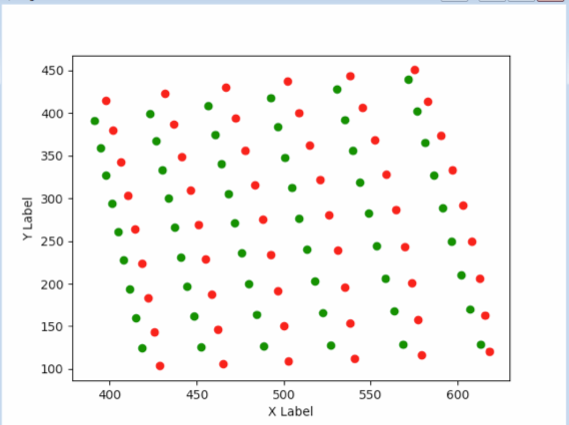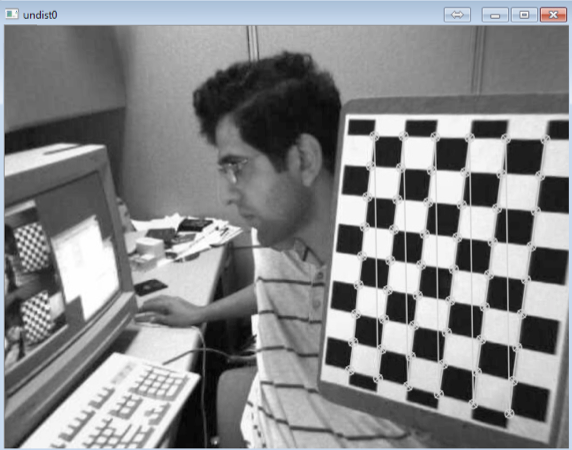I am trying to calibrate a stereo camera setup. I use images from multiple chessboards from two cameras. I get corner points for all images and use these to run separate camera calibrations. This I can use to do pose estimation as shown in the documentation example. I however cannot figure out how to triangulate points and do a back projection of the 3d points to the separate 2d images. This is the example from the documentation for a single camera: _,rvecs0, tvecs0, inliers = cv2.solvePnPRansac*(objp, imgpoints3, mtx0, dist0) imgpts, jac = cv2.projectPoints(axis, rvecs0, tvecs0, mtx0, dist0) This works perfectly, but uses the rotation and translation vectors for a single pose. My question is how to generalise this, without using the pose of a calibration plane?
I have used the stereo calibration function and stereo rectify functions to obtain the required parameters for triangulation and for projectpoints, but this is where I get stuck:
retval, cameraMatrix0, distCoeffs0, cameraMatrix1, distCoeffs1, R, T, E, F= cv2.stereoCalibrate(
np.array(objpoints), np.array(imgpoints0), np.array(imgpoints1), mtx0, dist0, mtx1, dist1, img_shape, flags= cv2.CALIB_FIX_INTRINSIC )
R0, R1, P0, P1, dum, dum, dum = cv2.stereoRectify(cameraMatrix0, distCoeffs0, cameraMatrix1, distCoeffs1,img_shape, R,T)
What should now be the sequence of calls to calculate 3d points, and get a back projection in the separate images for the 3d points?



